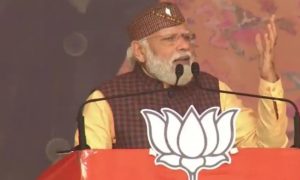By Sonam Chandwani
Financial institutions are focused on risk now, more than ever before. The virus-induced lockdown has raised “Liquidity” and Non-Performing Assets (“NPA”) issues popularizing these buzzwords in financial circles and beyond. Anticipating a domino effect on loan defaults amongst small to medium-sized businesses, the Finance Ministry in conjoined efforts with Regulators and the Reserve Bank of India (RBI), introduced numerous measures for the maintenance of equilibrium between the market forces of demand and supply during the pandemic.
With the widespread prevalence of COVID-19 pandemic, they are increasingly recognizing that the rebuilding phase offers a unique opportunity to encourage action on the agenda of survival until the COVID-19 dust settles. The acute phase of COVID-19 has drawn central banks’ attention towards from a crisis that was earlier restricted to some states and regions, to a global economic crisis riddled with challenges. The nature of the crisis has revealed basic vulnerabilities around the world, most importantly those surrounding individual borrowers.
The Finance Ministry directed Banks to roll out loans resolution framework with the Loan Moratorium period ending on August 31st and the festive season around the corner. In doing that the Supreme Court directed that while Banks are free to restructure loans, they cannot penalize individual borrowers availing moratorium benefit. The apex court held that charging interest on deferred EMI payments under the moratorium scheme during the COVID-19 pandemic would amount to paying interest on interest which is against “the basic canons of finance” and unfair to those who repaid loans as per schedule.
RBI’s move to restructure personal loans accord this benefit to consumer credit, education loans, loans for creation or housing loans pursuant to a central bank notification. Specifically, the relief may include “rescheduling of payments, conversion of any interest accrued, or to be accrued, into another credit facility, or, granting of a moratorium, based on an assessment of income streams of the borrower, subject to a maximum of two years”; however the exact contours of the resolution plan have not been clearly laid out and remain undecided.
The primary objective of this move at helping borrowers as on the pretext of mass unemployment, pay cuts and lay-offs in light of the world’s strictest lockdown, thereby paralyzing economic activity. So a 2-year moratorium that RBI has now permitted under such restructuring proves to be a blessing in disguise for people experiencing cash crunch during the pandemic.
Clearly, it will boost households facing a cash crunch — especially those who lost their jobs or small businesses who are on the verge of a shutdown. RBI has moved consistently and quickly since the start of the pandemic to calm markets, to provide liquidity and, now, these steps should go some distance in giving relief to the distressed liquidity-starved household.
However, each household should be wary of using this facility. At the outset, a loan moratorium was aimed at helping those in distress and not meant to be used as an opportunity for the pre-existing defaulters of loan payments. At the other end of the spectrum, the moratorium extension is likely to provide a negative credit outlook for financial intermediaries in the shadow financing industry like Housing Finance Companies and Non-Banking Financial Companies.
Invariably, the deferment of EMIs will have an adverse impact on the cash flows of these financial institutions and test their resilience during depressionary forces emanating from the COVID-19 pandemic. Despite the slew of measures announced by the RBI and government to alleviate liquidity woes of financial institutions, these measures may have less impact in the short to medium term, but the operative word being “defer” of loan instalments, and not a complete waiver or discount thereof should be of prime importance in the personal finance industry and be availed only if absolutely required.
A growing number of central banks and banking supervisors are starting to work together to progress a global approach and agenda. In doing so, the central banks need to develop a clear strategy on the way forward. A monetary policy needs to be forward looking. Given the slowdown in the economy and that the transmission of rate cuts takes time, there is a need for a further monetary policy easing. This will also be helpful as uncertainty remains over COVID-19 having a deflationary or inflationary impact on the Indian economy in the medium run.
While the temptation to adopt aggressive measures maybe high, crossing the traditional boundaries between fiscal and monetary policies, but are feasible for central banks in advanced economies with high credibility stemming from a long track record of stability-oriented policies. Thus this strong medicine should only be taken with extreme care.





































